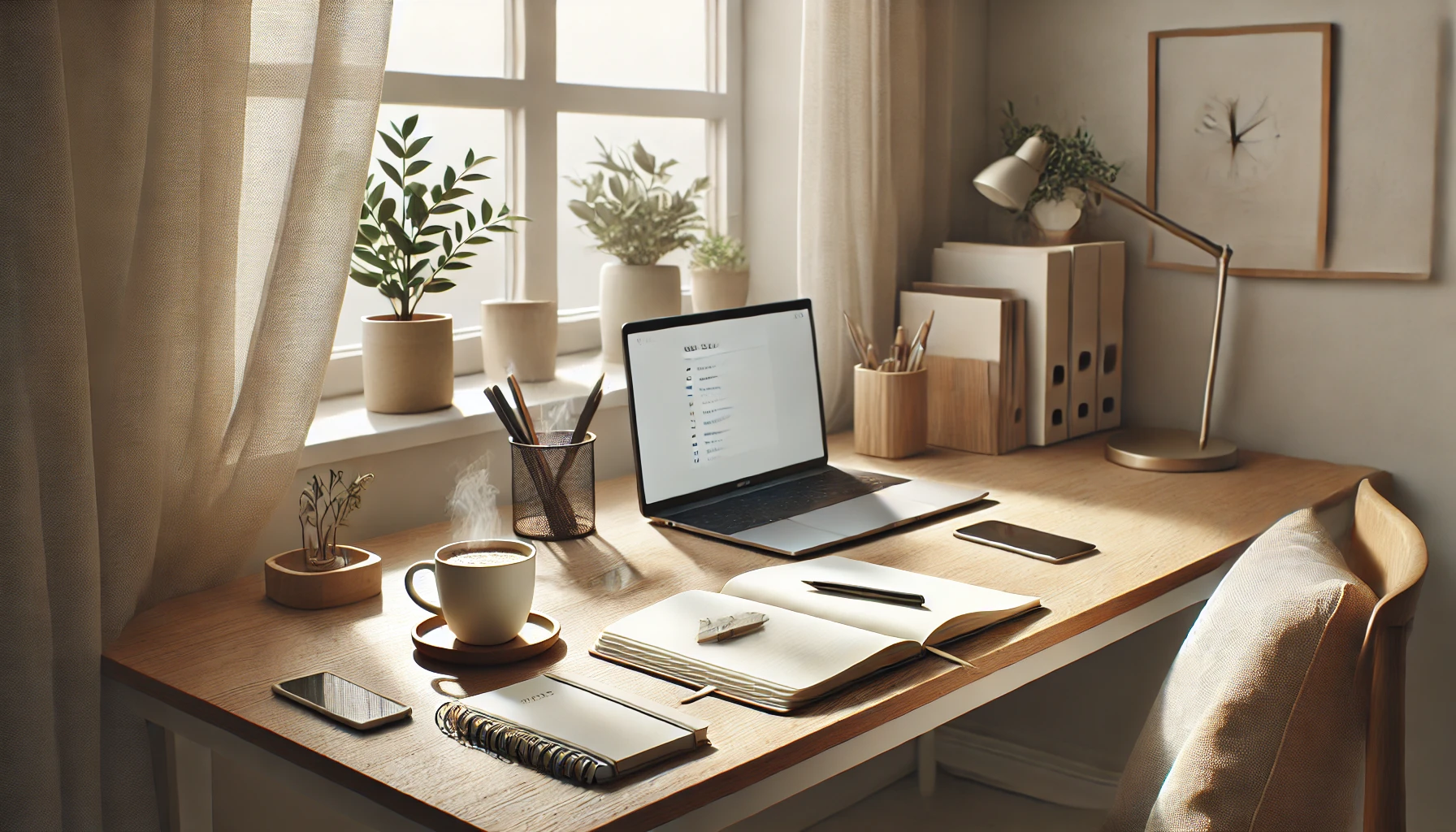Life moves fast, and it’s easy to get caught in a whirlwind of tasks, distractions, and obligations. But what if your day could feel lighter, more focused, and more intentional?
Minimalism isn’t just about decluttering your home — it’s also about simplifying your routine to create space for what matters most. Here’s how you can start building a daily routine that aligns with a minimalist lifestyle.
1. Start with a Clear Morning Ritual
Mornings set the tone for the rest of your day. A minimalist morning doesn’t mean rushing or checking your phone right away — it means creating a calm and purposeful start.
Try this:
- Wake up 15–30 minutes earlier
- Make your bed
- Enjoy a quiet coffee or tea
- Do a short stretch or breathing exercise
- Set your top 1–3 intentions for the day
A consistent, simple morning ritual helps reduce decision fatigue and brings clarity.
2. Limit Your Daily To-Do List
Long to-do lists are overwhelming and often unrealistic. Minimalism encourages you to focus on the essential — not the endless.
The trick: Choose just 3 main tasks per day. Ask yourself:
“If I only do these three things today, will it be a good day?”
You’ll be surprised how much more productive and fulfilled you feel by focusing on less.
3. Create Time Blocks Instead of Multitasking
Multitasking often leads to stress and mistakes. A better approach is time blocking — assigning specific time slots for specific types of tasks.
For example:
- 9:00–10:30 AM: Deep work (writing, strategy, creative tasks)
- 11:00–11:30 AM: Emails
- 2:00–2:30 PM: Admin or errands
You’ll waste less time switching gears and feel more in control of your day.
4. Say “No” More Often
A cluttered routine usually comes from saying “yes” too often — yes to extra meetings, projects, favors, and distractions.
Minimalism is about intentional living. Say “no” to things that don’t align with your goals or add real value to your life. That includes social events, unnecessary shopping trips, or even checking social media constantly.
Every “no” creates room for a more meaningful “yes.”
5. Simplify Your Meals
Meal planning can be a huge time and energy drain. A minimalist approach can save you hours each week.
Here’s how:
- Choose 2–3 go-to breakfast options
- Rotate simple lunches and dinners (create a weekly menu)
- Keep your grocery list short and focused
- Prep ingredients in batches when possible
Eating well doesn’t have to be complicated.
6. Declutter Your Daily Spaces
The spaces you use most — your desk, kitchen, or bathroom counter — can impact how you feel throughout the day.
Take a few minutes in the morning or evening to do a mini reset:
- Clear surfaces
- Put things back in place
- Toss out trash or unused items
- Light a candle or open a window for fresh air
You’ll think more clearly and feel less anxious with a tidy space.
7. Automate and Streamline Small Tasks
Look for small tasks that you repeat daily and see if you can automate or simplify them.
Examples:
- Use automatic bill pay
- Set up reminders instead of mentally tracking things
- Use a digital calendar to manage appointments
- Keep essentials in one place (keys, wallet, charger)
These little changes add up to big time and mental space savings.
8. Build in Mindful Breaks
Your day doesn’t have to be go-go-go. In fact, stepping back often leads to better results.
Try these minimalist-style breaks:
- 5 minutes of deep breathing
- A short walk around the block
- Listening to calming music
- A screen-free coffee break
Create space to breathe — literally and mentally.
9. Limit Screen Time (Especially Social Media)
Scrolling endlessly can take up hours of your day without adding value. A minimalist routine includes digital boundaries.
Tips:
- Turn off notifications
- Set specific times to check emails or social media
- Use apps like Focus Mode or Screen Time
- Keep your phone out of reach during focused work
Less screen time = more presence and peace.
10. Reflect and Adjust Regularly
Minimalism isn’t static — your routine should evolve with your needs. At the end of the day or week, ask yourself:
- What worked well today?
- What felt unnecessary?
- What do I want more or less of?
Make small adjustments and improvements. Minimalism is a journey — not a rigid rulebook.
Living a Lighter, More Purposeful Day
When you simplify your routine, you’re not doing less — you’re doing what matters most.
You’ll feel calmer, more present, and more energized for the things and people that matter. Don’t aim for perfection. Start with one small change, and build from there.
The beauty of a minimalist daily routine is that it’s custom-fit for you.

